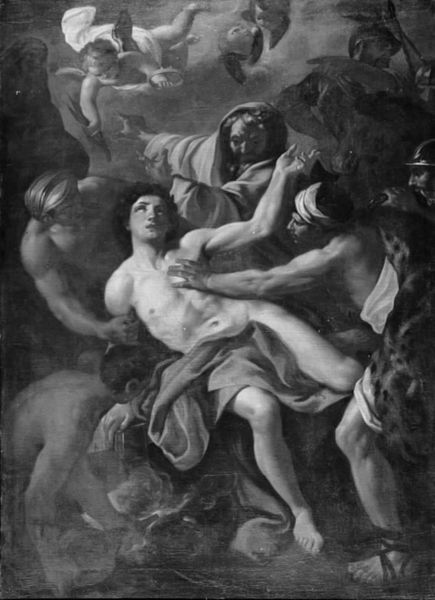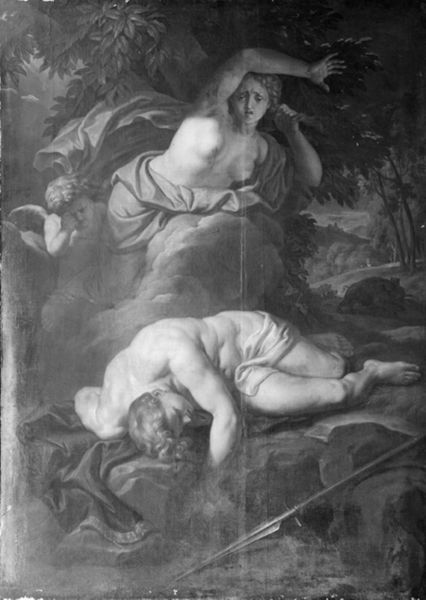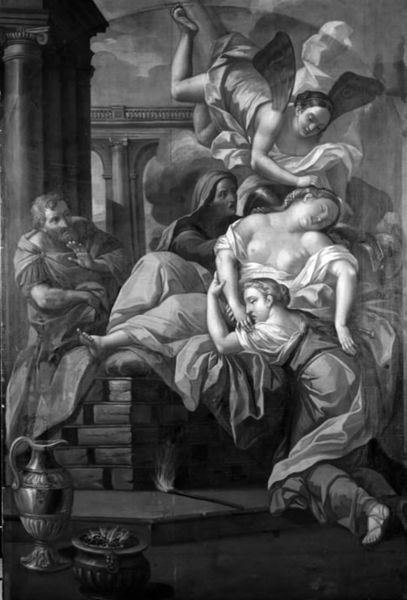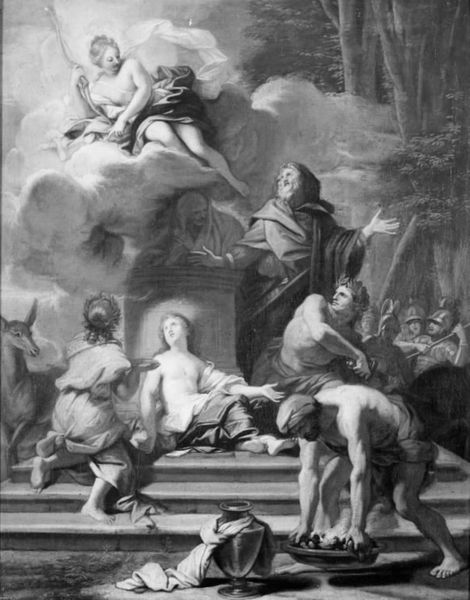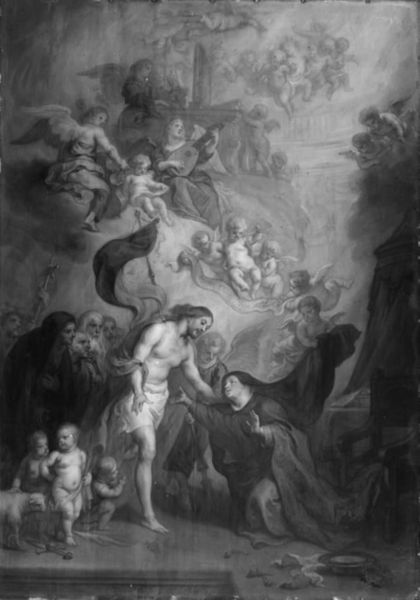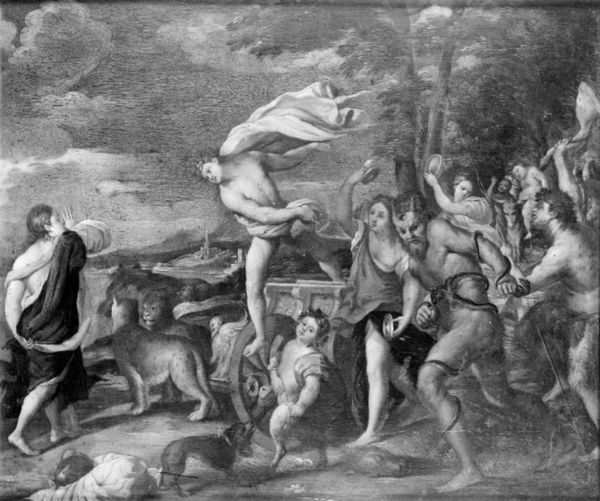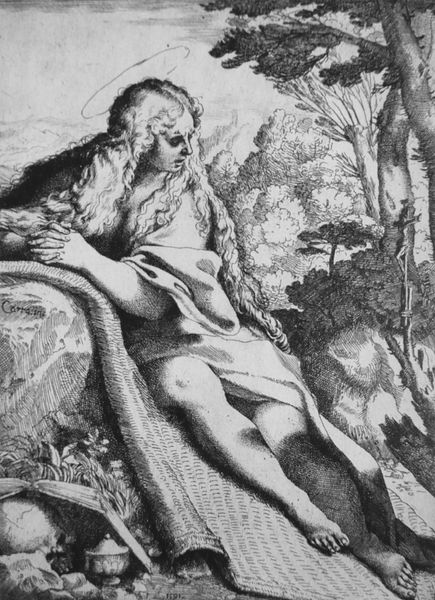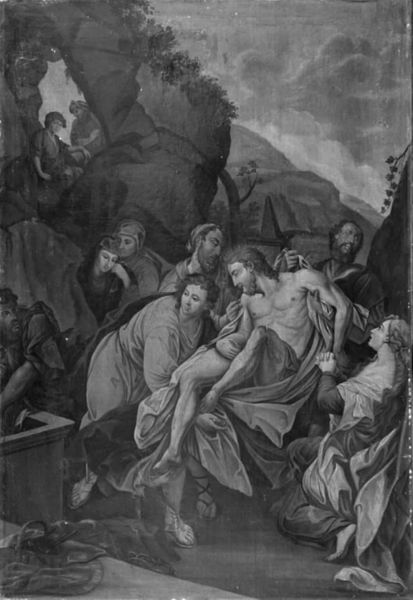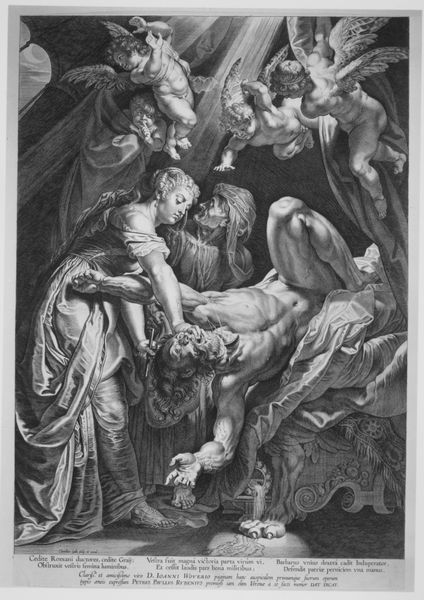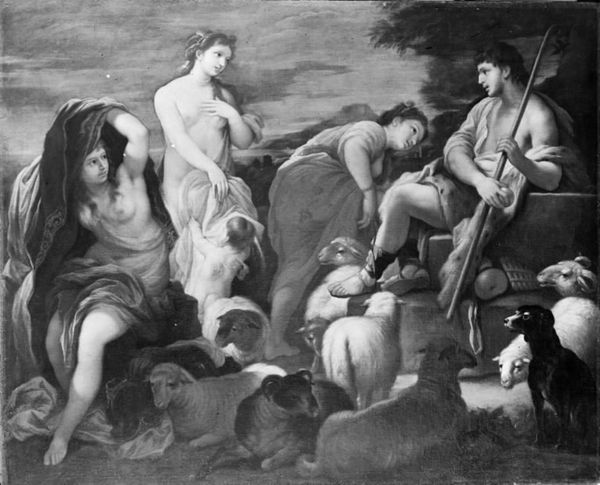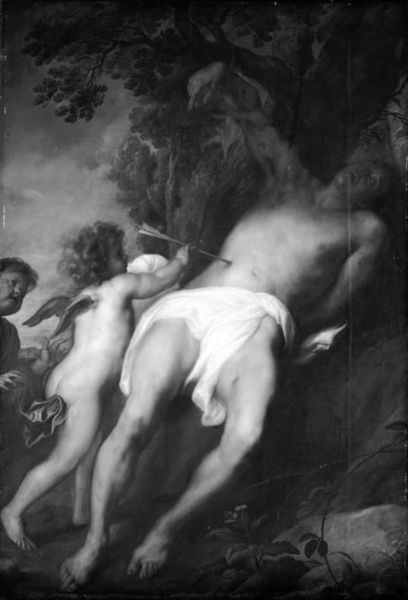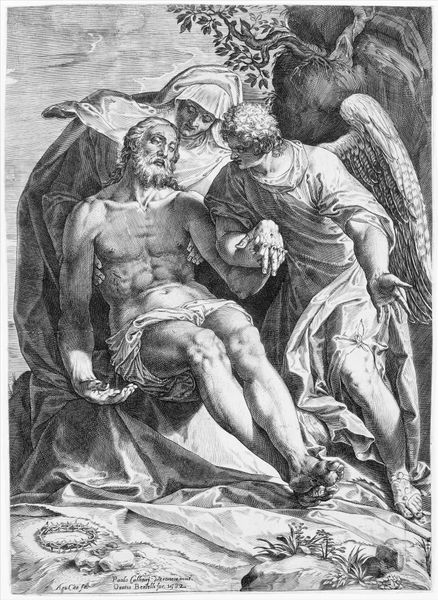
painting, oil-paint, canvas
#
portrait
#
allegory
#
baroque
#
painting
#
oil-paint
#
charcoal drawing
#
figuration
#
canvas
#
black and white
#
chiaroscuro
#
portrait drawing
#
history-painting
#
charcoal
#
graphite
Dimensions: 179.5 cm (height) x 145 cm (width) (Netto)
Curator: My goodness, the tension practically leaps from the canvas. This high-contrast black-and-white rendering really dials up the drama, doesn’t it? Editor: It does indeed. What we're looking at is "Hercules and Envy" an oil on canvas believed to have been created sometime between 1638 and 1678 by Jürgen Ovens. Now residing in the Statens Museum for Kunst, it encapsulates a pivotal scene brimming with allegory. Curator: Allegory, yes, but also something deeper. Hercules seems to be looking back, away from that jealous figure leering down from the clouds. Is it fear I see in his expression, or defiance? Maybe a bit of both? I love that ambiguity! Editor: That "jealous figure" embodies Envy, one of the seven deadly sins. Consider how the historical moment may have influenced Oven's depiction of Envy; within rapidly changing socio-political landscapes across 17th-century Europe, did Envy act as a social commentary during times riddled with inequality? Curator: Interesting… Like Envy is lashing out from his cloud because Hercules represents a rise above the everyday? Also, I see that sword! Poised, not in a threatening way, but certainly ready. It's fascinating how the artist uses chiaroscuro to almost carve Hercules out of the darkness. He feels… very present. Editor: Precisely. Hercules here may signify power, virtue, and even justified defense against external evils such as Envy, though this reading tends to valorize European ideals that ought to be approached with nuance. What do you notice of the cherubic figures cowering behind Hercules? Curator: Oh, the cherubs! They add another layer, don’t they? Innocence, perhaps, trying to shield themselves from something they don't understand. Or is it simply a device, adding depth and roundness to the composition? I confess I go back and forth. Editor: Think about the Baroque style, marked by ornate details meant to emotionally capture audiences. Positioning these small winged creatures beside Hercules—a prominent, hyper-masculine emblem of valor and might—challenges the dominant image of power as always violent. What happens to Hercules' "strength" in this light? Curator: So it isn't a straightforward narrative. I get it. Looking closer, I love the swirling drama of the background—almost obscuring any kind of rational space. More like the theater of the mind! Editor: I find myself appreciating that complexity too. We often expect mythological paintings to portray idealized heroism without cracks. Here, the artist uses shadow, dynamic composition, and complicated iconography to explore tensions underlying these figures and what they symbolize. Curator: Well, that's given me a lot more to chew on, thanks! Editor: And for me as well! It really underlines how art acts a conduit for critical conversations.
Comments
No comments
Be the first to comment and join the conversation on the ultimate creative platform.
